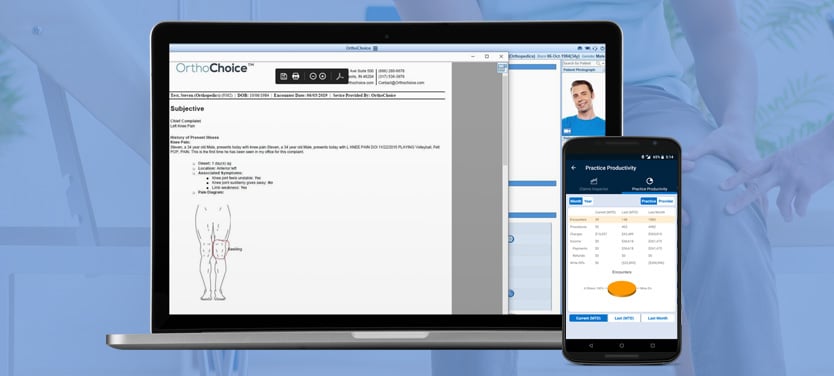
7 Features Your Orthopaedic EHR Should Have
Not every Orthopaedic EHR is the same. Ortho providers need a specialty-specific Electr...
February 17, 2020
Your Orthopaedic practice is not like any other. While all ortho practices share a common line of work, each one has its own unique identity. This identity is comprised of unique patients and one-of-a-kind physicians who have their own workflow. Your practice needs a flexible and customizable technology solution to maximize efficiency and grow as an organization. Without customization in your orthopaedic technology, your team will find it difficult to work the way they need to be their very best.
Why Customization is Essential:
1) Efficient Documentation
The customization of any technology empowers physicians to work more efficiently. By introducing customizable templates into your documentation process, physicians are able to tailor their documentation to their individual workflow. This allows them to streamline their documenting process so that they can spend less time on their computer and more time with their patients.
2) Custom Order Sets
From initial consult to diagnoses, custom order sets are made to fit the test/lab order needs of each provider in your office. Standardized order sets put your orthopaedic technology at risk of quickly falling out of date. With custom order sets available in your orthopaedic technology, providers can not only proceed with what works best for an individual treatment plan, but also make sure they are staying current on all industry changes.
3) Custom Dashboard
A custom dashboard allows physicians to view, track, and analyze information in the way that they understand best. They can adjust their dashboard to show certain information first, and move tabs around in a way that makes sense to them. This enables providers to not only work more efficiently, but also access key information that will educate their clinical decisions without wasting time. Your orthopaedic technology should also empower efficiency and better decision making by offer tools like visual vital tracking and digital patient intake.
Other Essential Features of Orthopaedic Technology:
1) Patient Portal
Your orthopaedic technology should also empower your patients to stay more involved in their personal care. Research shows that increased levels of patient engagement lead to better outcomes, more patient payments, and increased healthcare accountability among patients. By giving patients a tool like the patient portal, your orthopaedic technology will encourage patients to better understand themselves and empower them to take action toward a healthier life. Integrated orthopaedic technology allows patients to understand more than their health, but also their medical bills. Ask your vendor about an integrated payment solution and how it could help your practice get more patient payments.
2) Interoperability
In today’s world, access to information is everything. This includes a physician’s access to key patient information during the planning process. An interoperable orthopaedic technology solution makes it possible for physicians to access patient data from other providers. With interoperable software, providers can request patient data form any provider they may have seen in the past, improving the accuracy of your patient’s chart and decreasing the need for duplicate testing or the risk of overmedicating.
3) Cloud-Based
Lastly, cloud-based orthopaedic technology offers improved security when it comes to your practice’s data while also making it more accessible to your team overall. Cloud-based software enables the mobile use of things like your electronic health record, improving the accuracy of your data and enabling improved communication between patient and physician. With the right vendor, cloud-based technology can improve cybersecurity, minimizing the risk to your data, and enable your practice to grow outside of their doors.
To learn more about orthopaedic technology that could help your orthopaedic practice, click here.